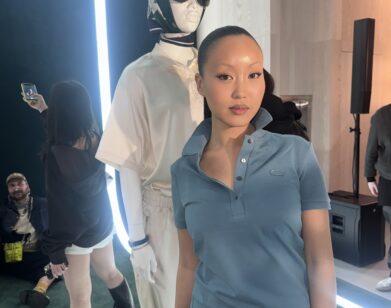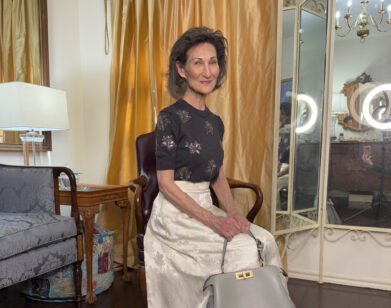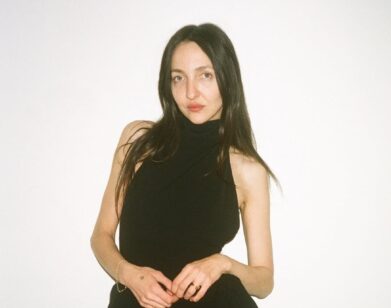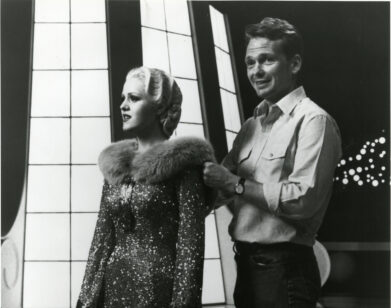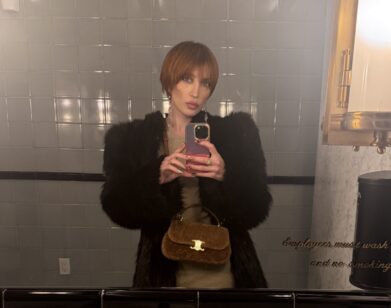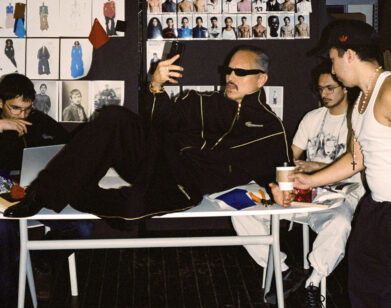Stephanie Seymour Looks Back On A Legendary Azzedine Alaïa Show
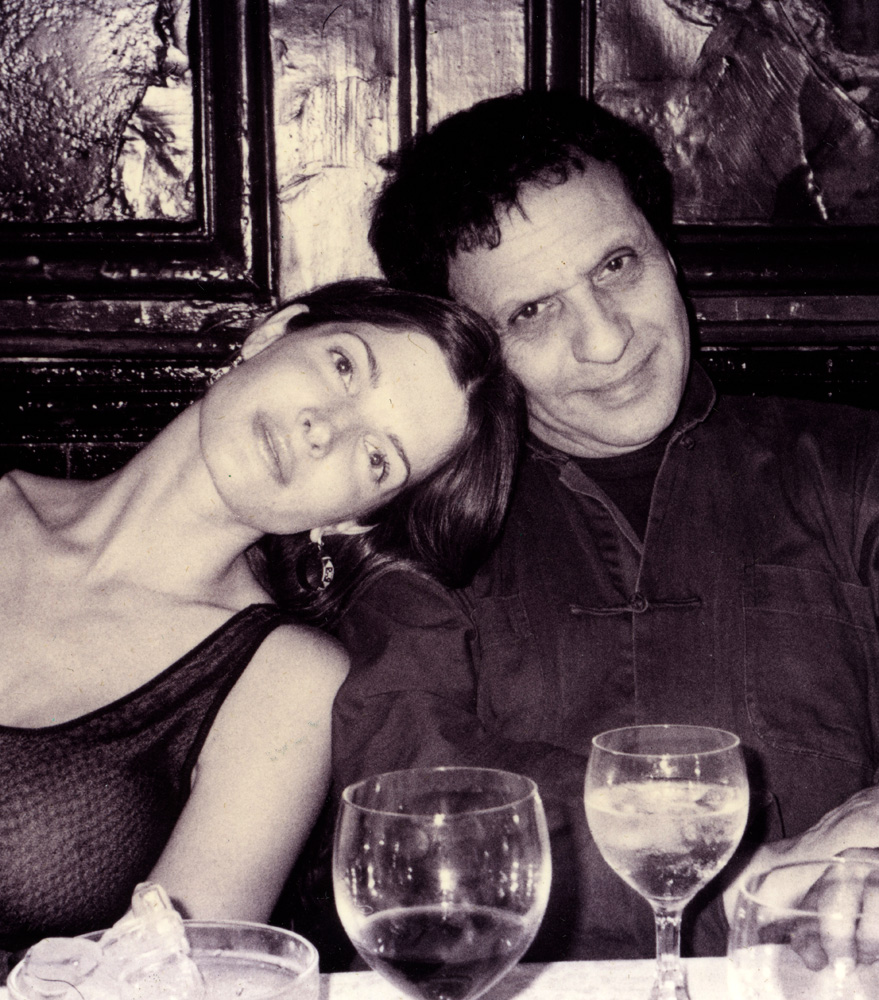
Seymour with Alaïa in Paris in 2002. Photo by Hamad Bechiri.
That Time When is Interview’s weekly trip through the pop cultural space-time continuum, where we return to some of the most overlooked moments from issues past. In this edition, we revisit our March 2009 story, in which the supermodel Stephanie Seymour interviews Azzedine Alaïa, with none other than Seymour herself.
He was the Titan of Tight, the last of the great modern couturiers, a man whose career has come to embody a lifelong love affair with the female form. Azzedine Alaïa, the late Tunisian-born designer, was notorious for his refusal to play by the rules of commerce; his privately debuted collections were held off schedule in his Paris atelier and placed no advertisements. Yet, few designers have been able to achieve such a profound effect on the world of fashion.
Dubbed the King of Cling, his second skin constructions perfectly captured women’s natural beauty and came to help define the fashion of the late 1980s and early 1990s. Often credited as the inventor of the supermodel, Alaïa’s cult following of star-studded devotees ranged from Naomi Campbell, Stephanie Seymour, Linda Evangelista, and Heléna Christensen to music idols like Tina Turner, Madonna, and Grace Jones.
In 2008, we asked Seymour to sit down with the late great couturier, whom she lovingly refers to as “Papa,” and has intimately known since the age of fifteen. The two friends discussed his life, legacy, and a little known fashion show he staged in New York City at the infamous ’80s hotspot Palladium. Choreographed by Jean-Paul Goude, who also designed the $50,000 set, 52 models took part in the show, whose cost totaled $100,000. Among the guests were, Simon Le Bon, Tina and Michael Chow, Joan Rivers, and artists such as Keith Haring, Jean-Michel Basquiat, Francesco Clemente, and our own Andy Warhol.
SEYMOUR: Then the next year you did the Palladium show. My husband and I have talked so much about the importance of the Palladium to New York culture. Arata Isozaki did the interior architecture for Ian Schrager. Jean-Paul Goude did the scenography. The nightclub was filled with major works by Basquiat, Clemente, Scharf, and Haring… Then you have this show of Azzedine Alaïa’s. How did that show come about?
ALAÏA: It was after I did a show in Paris. Another sponsor wanted to host me but we had a fight about control. They wanted to choose the models. I also wanted to use Jean-Paul Goude and they didn’t know who he was. So I said forget it. And then Ian Schrager asked me for uniforms for the bartenders and waitresses at the Palladium. When I came to New York, I was introduced to him. He offered to give me the space to do the New York show. So we did it with Ian Schrager at the Palladium—my way. It was wonderful.
SEYMOUR: Did you meet a lot of the artists when you were in New York at this time?
ALAÏA: Oh, yes. Basquiat, Haring, Clemente… At night we went to dinner at Mr. Chow’s. I was friends with Tina [Chow].
Thirty-five years later, we asked Seymour to recount this magical and oft-overlooked night in fashion history.
“The first show I ever did was for Azzedine, and when I went out on to the runway, I was literally talking to myself. He had it on video and thought it was just the funniest thing in the world. In the video, you see me walk out onto this little runway, and the entire time I’m muttering to myself, ‘I can’t believe I’m doing this. I can’t believe I’m doing this. I can’t believe I’m doing this.’ [Laughs.] Once I reach the end of the runway, I quickly turn in a circle and then continue talking to myself as the photographers shouted, ‘Stop! Please! Slow down!’ and I just ignore them and walk offstage.
Still, he just kept booking me. Azzedine knew that I couldn’t get hired for any other shows, so he called people like Kenzo and a few of his other friends, trying to get me bookings, and they all said, ‘But the girl can’t walk!’ to which he shot back ‘But who cares? She has the best butt!’ He told me that he knew I’d get better.
My second show was again with Azzedine, but this time it was at the Palladium Club in New York City. Jean-Paul Goude choreographed all the girls and Asaka Isazuki created the sets. Don’t ask me how I remember that! The morning of, we had a rehearsal, and it was pretty surreal for me because all the most famous models from that time were walking the show. I was a bit younger than the rest, and if you’re sixteen, eight to ten years makes a huge difference.
I remember standing in the lineup and scanning the room. Ric Ocasek was waiting for Paulina Porizkova, and I just died and thought to myself, ‘Oh my god! There’s is Ric Ocasek!’ Meanwhile, all of the girls are descending this monumental staircase, one after the other. I was in awe because it felt like such an impossible task. I had gone to that nightclub many a night, and believe me, unless you had a death wish, nobody ever used that staircase.
When you’re doing a fashion show, you don’t look down too see where you’re going. You’re supposed to keep your head up and your eyes fixed at the horizon. I just said, forget about it, and accepted that I’d have to stare at my feet the entire time, slowly shuffling from one step to the other. During the actual show, I only had one look to wear. It was still a bit of a trauma, like trying to scale down the side of a pyramid in heels [Laughs.] A trauma and an honor. Before it was my turn to walk, I peeked my head out from backstage to check out the girl ahead of me. It was Iman, and, if I remember correctly, she was wearing a long evening dress or coat. I watched her walk down the stairs with the most elegant walk you’ve ever seen. So long. So beautiful.
Like a swan, she floated out onto the middle of the runway, and suddenly began to turn, the bottom of her dress rising in the air, as we all know only his dresses can do. She twirled her way down the rest of the runway, the train of the dress still flying up around her, and the audience just went wild for it. Once she reached the end, she suddenly stopped twirling and then just casually walked right off. You know, never cracking a smirk, never looking down. It was unbelievable! And then I’m supposed to go down the stairs and follow that—can you imagine? I did the very best I could; I wasn’t going to go down the runway talking to myself again. That was not going to happen. You do learn, but there is no greater queen of the runway like Iman, and this show was incredible.”

